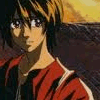| View previous topic :: View next topic |
| Author |
Message |
|
|
Raftina
 Joined: 15 Mar 2011
Joined: 15 Mar 2011
Posts: 3282
|
 Posted: Wed Oct 30, 2013 10:41 am Posted: Wed Oct 30, 2013 10:41 am
|
 |
|
|
This happens most often with TV series that's based on some source material, where the source material's pacing is not quite consistent with the 1-2 cour 20 minute episode format.
I've noted the following:
1. Extending scenes: This is most common in shounen fighting series. The characters pause frequently and think or talk about their moves--this is usually the source material. The anime then takes these moments to add flashbacks related to the thoughts or dialog. Examples are numerous--Bleach, Dragon Ball, etc all use this frequently.
2. Fluff episodes: This is where the characters go off to the side to do something completely different. The characters are usually out of character, with animation completely outsourced to a cheaper studio, and the content is never mentioned again. It's usually a hot springs, beach, Kurisumasu episode or the like. Examples include the haunted room episode in Chobits
3. Character development episode: This is usually an episode dedicated to developing a particular character. It's often a side character who gets to star here. It seems most often used for someone that's about to die, though not necessarily. It's also used to explore the reactions of the characters after a particularly heavy episode hit. Examples include the aftermath of the scouting mission in Attach on Titan or the episode dedicated to Yeegar in D.Gray Man.
4. Recap episodes
5. Original arcs: Generally only occurs in long runners that are about to overtake the manga. The characters go off for an entire sidequest that spans a cour or more. Examples include the netherworld tournament in Dragon Ball Z and the zanpakuto arc in Bleach.
6. Rearranging scenes: Sometimes the source material will flash back to a scene that occurred earlier in the internal chronology but was not shown when the source material covered that time period. The anime then puts the scene back to the chronological order. Examples of this includes putting the discussion about Jean's character into the middle of the Trost arc instead of as a flashback at the end, in Attack on Titan.
7. Long recaps every episode: This is the "previously on Dragon Ball Z..." segments that tell you what happened in the last 2-3 weeks.
|
| Back to top |
|
|
|
Key
Moderator
 Joined: 03 Nov 2003
Joined: 03 Nov 2003
Posts: 18587
Location: Indianapolis, IN (formerly Mimiho Valley)
|
 Posted: Wed Oct 30, 2013 3:05 pm Posted: Wed Oct 30, 2013 3:05 pm
|
 |
|
|
#6, without question, is my preferred method. Too many Western anime fans treat the original novel writer or manga-ka as infallible when it comes to ordering things, when in truth many of them probably wish that they had ordered things differently upon reflection and thus are sometimes even in favor of having scenes reordered for the anime version. (Heck, I sometimes find this to be the case when rereading my older reviews.) Even in cases where the original creators don't feel that way, that doesn't mean that the storytelling can't be improved upon.
Case in point: SAO. Episodes 2-6 actually came from the second book of fill-in-the-gap short stories, but few disagree that they should have been placed where they were because it allowed events to play out chronologically rather than with big flashbacks. It also allowed the anime producers to use the material from those scenes to set up ones in the main storyline.
|
| Back to top |
|
|
|
Touma
 Joined: 29 Aug 2007
Joined: 29 Aug 2007
Posts: 2651
Location: Colorado, USA
|
 Posted: Wed Oct 30, 2013 5:55 pm Posted: Wed Oct 30, 2013 5:55 pm
|
 |
|
|
My least preferred methods are recaps and reviews of any kind. This is probably because I watch everything on DVD and usually watch 3 to 6 episodes of the same show every day until I finish it. I definitely do not need a review of something that I just finished watching.
If I was watching one episode per week I might feel differently.
As for the others, I do not have any preference. They can all be very good, or very bad.
Some of my favorite episodes have been "fluff."
I often may not realize that I am watching an original arc because I have not read the manga for the show. I will say though that I was enjoying Bleach very much until I got to the Bount story. I made it completely through that arc but it killed my desire to continue watching the show. I did not know that it was an original arc until I read the manga later.
But that does not mean that original stories in general are bad.
I really do not care how it is done, as long as I enjoy the end result.
|
| Back to top |
|
|
|
ikillchicken
 Joined: 12 Feb 2007
Joined: 12 Feb 2007
Posts: 7272
Location: Vancouver
|
 Posted: Wed Oct 30, 2013 6:33 pm Posted: Wed Oct 30, 2013 6:33 pm
|
 |
|
|
Changes:
-Extending/rearranging scenes:
I don't really think there is a definite answer here. It's completely situational. There's nothing inherently correct or incorrect about any of this option. The effectiveness of fleshing out or reordering the material you have will depend 100% on what you're adding/changing and what's going on around it. If your changes work, great. If not, well then you should just do something else. Such as...
Time wasting:
-Recap episodes
There's nothing wrong with this. I'd rather watch 11 really good, well paced episodes and have one pointless recap week than watch 12 draggy proper episodes. Because ultimately, I can just skip the recap.
-Long recaps at the start of episodes.
The fast-forward button exists for a reason. Give me 17 minutes of good pacing or whatever you think suits the content you have. The rest is just bullshit to make it work for TV. It's no different than commercials to me. (Although please, use the opening theme as a clear buffer between recap and new content).
Things you probably shouldn't do:
-Fluff
No. Don't do that. Never do that. If you're just filling time at least make it clear that this is what you're doing so I can skip it. Don't bother with any pretense that this is actually part of the show.
-Original Arcs
Original endings are fine. There's nothing wrong with changes. But original arcs that are just there to fill time almost always become filler because you can't really do anything with them. You can't really have anything meaningful happen because you've got to keep the same status quo for when you eventually get back to the adapted material.
|
| Back to top |
|
|
|
Looneygamemaster
 Joined: 21 Jan 2012
Joined: 21 Jan 2012
Posts: 192
|
 Posted: Wed Oct 30, 2013 7:22 pm Posted: Wed Oct 30, 2013 7:22 pm
|
 |
|
|
If you're really talented, you can try and change the source material's story, so your show doesn't have to be a 1:1 copy and paste adaptation with no life of its own.
But since that kind of talent is rare, I'd probably go with rearranging and/or extending scenes, as long as they're done skillfully. I have no problem with filler either, as long as it actually contributes something. Good filler can actually complement the story (witness Yu Yu Hakusho). When something's actively disruptive to the story and gives the feeling that its only purpose is to be filler or padding, that's when I lose all patience.
And that's what most recaps are, which makes them my least favorite method.
|
| Back to top |
|
|
|
rheiders
 Joined: 05 Jul 2011
Joined: 05 Jul 2011
Posts: 1137
Location: Colorful Colorado :)
|
 Posted: Wed Oct 30, 2013 9:07 pm Posted: Wed Oct 30, 2013 9:07 pm
|
 |
|
|
I like filler episodes that expand on character development or worldbuilding. They give the story an episode or two to breathe while also expanding on important narrative aspects other than strictly advancing the plot. If they're really good, these types of filler episodes can even end up among my favorites in the series. I'm also all for original arcs and gecko endings as long as the writers actually have a direction and point in mind when they do so. FMA, whether you like that version of the story or not, diverged from the source material in an interesting way that added something to the franchise rather than being a verbatim copy of the manga. Meanwhile, Magi had a gecko ending that made no sense within the rules the adaptation set for itself and ended in a very unsatisfying way. So it can go either way. I think the addition of character arcs for Sugimoto (a bit player in the novel) and Asano (anime-original character) in The Twelve Kingdoms are examples of successful original arcs that add to the depth of the story without changing its framework too much (all things considered, it's a pretty faithful adaptation).
I also like the rearranging of scenes in some series like Attack on Titan. I haven't read the manga yet, but after receiving detailed accounts of the changes made in the anime from readers of the manga, it seems to me that most to all of those changes were for the better. Actually, I can go back to Magi for an example where I am familiar with the source material--the changes made early on in the adaptation to the pacing and order of events improved on the first few mini-arcs significantly.
Recaps are my least favorite because there's really no worth to them. They're just clip shows and are often only made to give the animators a break for a week.
|
| Back to top |
|
|
|
Dessa
 Joined: 14 Jul 2004
Joined: 14 Jul 2004
Posts: 4438
|
 Posted: Wed Oct 30, 2013 9:47 pm Posted: Wed Oct 30, 2013 9:47 pm
|
 |
|
|
A lot of time, for me, it depends on the type of show/story, when it's done, how it's done, etc.
I'll go through these in order
1. Extending scenes(/padding/expanding): In most cases, this is usually my preference. And not just for action stuff. Attack on Titan, as was mentioned, expanded a lot on manga stuff to make it fill out the season. Sometimes it's obvious that they're padding for time, but others it works really well.
2. Fluff episodes: AKA Filler. Again, this is very much a "can be done right, can be done VERY wrong". Like Slayers. Next had some wonderful filler episodes. My roommate refuses to let me watch the filler episodes of Try, they're (apparently) that bad.
3. Character development episode: This one I'm really torn on. A lot of it depends on the context and how they're doing it. If it's done along with expanding existing story out, it's usually not bad. But then again, there's times when it's obviously filler crap that just makes me want to shoot someone.
4. Recap episodes: Surprisingly enough, I don't hate these. But, like all of these, it depends on when/how they're done. Nadesico, for example, has a hilarious recap episode. The Nadesico crew is watching Gekigangar who is watching Nadesico (who is watching Gekigangar). Another one I really appreciated was .hack//SIGN, because there was so much going on that seemed disconnected, and the recap episode presented things in a way that helped them be understood. Recaps also benefit when there's new footage, as well.
5. Original arcs: A lot of times, I'd rather recaps than this. Ugh, some of the crap Bleach has had, especially when they're timed in such ways that make absolutely no sense.
6. Rearranging scenes: Attack on Titan and Sword Art Online used this really well. I can't think of examples off the top of my head, but I've seen others that it doesn't work. Especially if it's something where you're not supposed to know what happens in between two scenes until later.
7. Long recaps every episode: Uh, yeah, I can't think of any time this one is useful.
|
| Back to top |
|
|
|
Zalis116
Moderator
 Joined: 31 Mar 2005
Joined: 31 Mar 2005
Posts: 6903
Location: Kazune City
|
 Posted: Thu Oct 31, 2013 1:18 am Posted: Thu Oct 31, 2013 1:18 am
|
 |
|
|
The case could be made for there being a #8: going on a complete hiatus and breaking up 26 episodes into 2 13-episode series with a cour or two (or more) between them. Of course, that doesn't always avoid questionable original material, as seen with Ikki Tousen's later seasons and some of Familiar of Zero's 3rd season. And it doesn't work for long-running shounen anime that need constant on-air presence to stay relevant to mainstream/child audiences. But for otaku shows with loyal fanbases, it can spread more strong canon material across more time with minimal need for filler. Sayonara Zetsubou Sensei and Hidamari Sketch worked well this way.
|
| Back to top |
|
|
|
Raftina
 Joined: 15 Mar 2011
Joined: 15 Mar 2011
Posts: 3282
|
 Posted: Thu Oct 31, 2013 1:32 am Posted: Thu Oct 31, 2013 1:32 am
|
 |
|
|
Oh there are definitely more options than the ones I've listed--it is not meant to be exhaustive, just suggestions of common ones to start the discussion. One notable omission that I thought of later is cutting non-essentials. Cutting content is not always a bad thing: I, for one, am very glad that Inuyasha: the FInal Act did not feel compelled to adapt the kitsune school chapters.
|
| Back to top |
|
|
|
Knoepfchen
 Joined: 13 Dec 2012
Joined: 13 Dec 2012
Posts: 698
|
 Posted: Thu Oct 31, 2013 3:11 am Posted: Thu Oct 31, 2013 3:11 am
|
 |
|
|
Character Development and Rearranging Scenes
Character development: You mentioned D.Gray-man for character development episodes already. They made me care about minor characters before killing them off, more than the manga did. They did this a few times if my memory is correct. They also adapted parts of some prequel (?) novels and put them in continuity with the show to provide additional information about some of the main characters, which was also nice. Then they decided to go with the filler solution and things got rather boring.
Rearranging scenes: This can work really well if well done and provide a completely different angle or interpretation of a storyline.
There are some really entertaining fluff episodes out there. I can enjoy seeing characters act out of character without it having consequences.
And I agree, sometimes cutting content is the way to go. No source material is infallible.
|
| Back to top |
|
|
|
|
yoshiyukiblade
Joined: 10 Nov 2012
Posts: 305
|
 Posted: Thu Oct 31, 2013 4:23 am Posted: Thu Oct 31, 2013 4:23 am
|
 |
|
|
I'd prefer character development episodes if done right and if the characters were kinda interesting to begin with. Though not impossible, I may not suddenly start liking a character because a dedicated episode let me get to know him/her better. Usually, a fleshed out manga has side-stories of characters anyway. Oh, and by "done right" I mean, there's a reasonably complete story to be told about them, not the equivalent of fluff without the main character at the center of attention.
I'm not sure about rearranging things chronologically. Most of the time, presenting things out of order (whether that's the release order or not) is much better. A perfect case of this is Rurouni Kenshin. Going from the TV series to the OVA prequel was simply mind-blowing.
|
| Back to top |
|
|
|
vanfanel
 Joined: 26 Dec 2008
Joined: 26 Dec 2008
Posts: 1265
|
 Posted: Thu Oct 31, 2013 6:52 am Posted: Thu Oct 31, 2013 6:52 am
|
 |
|
|
I'm watching two shows right now that have to deal with this: "Naruto: Shippuuden" and "One Piece."
Naruto's strategy is using fluff episodes and dragging out canon scenes with lots and lots of flashbacks to other scenes longtime fans have already seen a bazillion times. (Fillers will occasionally flash back to other fillers, too). One Piece's strategy is to open with a loooong recap and then .... just .... move .... really .... slowwwwwlly. I'm surprised they don't do an ED, too, while they're at it.
But as frustrating as it gets to compare the weekly charts showing who's where in "One Piece" and realize that the players have only been nudged along slightly since the previous episode, I find it infinitely preferable to the way Naruto handles things -- even though I like Naruto better as a series.
I wouldn't mind the Naruto filler so much if A) it didn't sometimes try to coexist with canon material, and B) the show actually had good pacing when it isn't messing around. Is there any good reason on earth why that first arc of Shippuuden needed to last over 30 eps? It would be interesting to see just how far you could pare that down and not feel you're missing anything.
My favorite strategy is the one employed for "Cross Game," "Monster," and "Inu Yasha: Final Chapter": Don't start animating it until it's either finished or in the home stretch of its run.
|
| Back to top |
|
|
|
|